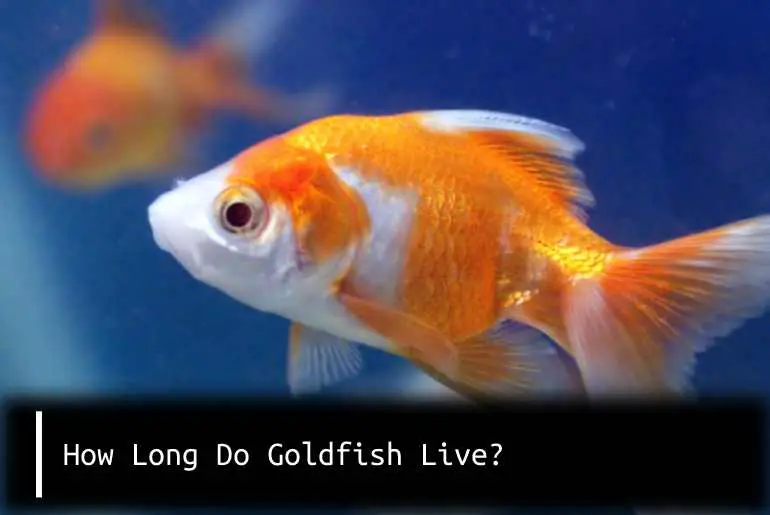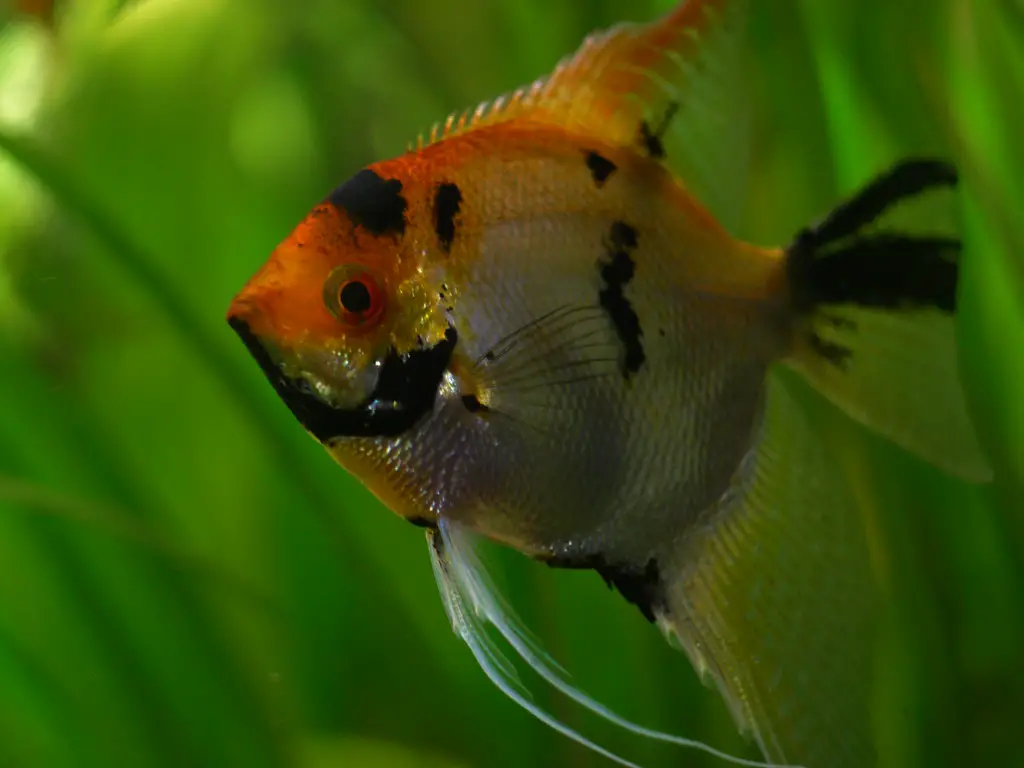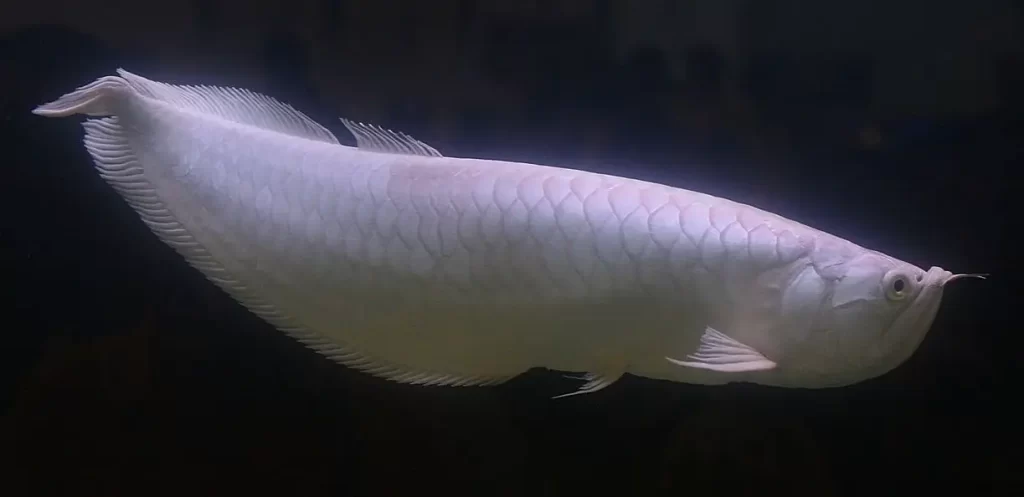The most well-liked decorative fish are Goldfish (Carassius auratus), which are renowned for their eye-catching vibrant colors. In Asia and some areas of Eastern Europe, Goldfish can be found in the wild, living in chilly streams, lakes, and ponds. Goldfish are native to temperate climes. There are many different types of Goldfish available nowadays. How Long Do Goldfish Live?
The interactions between Goldfish, which are sociable and intelligent creatures, and their human carers, whom they may learn to recognize, are frequently observed. When given the correct care, Goldfish can live for up to 30 years, with an average lifespan of 10 to 15 years. Due to poor home conditions, a lot of Goldfish, unfortunately, do not live up to their potential.
Nevertheless, a widespread misconception regarding Goldfish is that these fishes do not live very long. And regrettably, that is now the case for the majority of Goldfish kept in captivity—but not for the reasons you may think.
You see, Goldfish do not always have short lifespans. It is that most individuals, especially those with little experience or expertise in fishkeeping, are unaware of what it takes to maintain a Goldfish over its actual average lifespan. As a result, the subject of how long Goldfish live lacks an obvious solution. Everything relies on how well these fishes are raised. Learn more below!
Do Goldfish Live A Long Time?
The life expectancy of a Goldfish can reach 15 to 20 years if it is healthy and well-cared for. In an outdoor pond, which is the closest imitation of a Goldfish’s native habitat, some slim-bodied Goldfish, such as the distribution system or ordinary Goldfish as well as comet Goldfish, have even been documented to live up to 40 years.
The average lifespan of fancy Goldfish is between 7 and 12 years. This is due to the fact that they are far frailer than slim-bodied Goldfish. As a result of having so many organs crammed into such a small, spherical, squat body, their biological mechanisms are therefore much more easily perturbed.
Why Do Goldfish Pass Away So Quickly?
The projected expectancy of your Goldfish really outpaces that of other household pets, like a dog or cat, who appears to be smarter and stronger. If you have been paying close attention, you have probably realized this by now.
However, Goldfish maintained as pets are increasingly less likely to live above the age of five. And as a result, many new Goldfish owners are left perplexed and wondering why their fish died so quickly and how they may ensure that their other fish live longer. Therefore, a lot of it depends on how well the Goldfish are cared for and kept.
Your Goldfish should live out their anticipated lifespan of 15-20 years provided you can provide them with a healthy environment and pond or tank water. However, the typical life expectancy for Goldfish kept in small bowls or tanks, kept in dirty water that contains substantial amounts of waste, or not fed a varied diet is 2 to 5 years.
The Lifespan Of Regular Goldfish Compared To Fancy Goldfish
Fancy Goldfish and Common Goldfish are significantly dissimilar even though they both come from the same family. Additionally, this affects their lifetime.
Long, flowing fins are a characteristic of fancy Goldfish species. Because most of them have two fins, these fishes can not swim as quickly as Common Goldfish. In addition, many species have larger bodies. These fish have evolved spherical stomachs that are more vulnerable to disease as a result of extensive selective breeding (like dropsy).
In unsanitary settings, fancy Goldfish are considerably more likely to contract a disease. Health problems are especially common with hypermodified animals, like the Bubble Eyes and Ranchu.
Those species typically have a lifespan of only five years.
Fancy Goldfish are typically far less resilient than Common Goldfish. They are more vulnerable to variations in the water quality, which can cause a variety of issues if the tank is not properly maintained. The average lifespan of a common Goldfish is 12 to 14 years. However, that can only be done with extreme caution.
Various Goldfish
Comet: Comets have a maximum lifespan of 15 years in an outside habitat. These fishes can live up to 12 years in a tank.
Oranda: In a large outdoor setting, this breed can live up to 20 years old and has a lifespan of 15 years on average.
Shubunkin: You can anticipate them to live up to 12 years in a tank. It can live for 14 or 15 years in an outdoor pond.
How Should I Maintain And Look After My Goldfish?
Due to poor home conditions, several Goldfish do not live up to their potential. Housing must satisfy both their physiological and behavioral needs. The following details will contribute to the longevity, health, and well-being of Goldfish.
Buying A Healthful Goldfish
Before buying a Goldfish, make sure the seller is trustworthy so that his\her aquariums are not too crowded. Fish in good health have brilliant, distinct body colors and retain their fins straight. Fish in good health are alert and swim naturally.
Fishes that drop or bob to the surface, fish with lumps, bumps, cuts, clamped fins, or a trail of excreta are all signs of poor health, as are fish that spend a lot of time in an aquarium corner. To guarantee that the Goldfish have enough room as they grow, it is important to take into account their potential size while picking Goldfish.
Aquarium Size
The minimal tank volume is around 50L, and the tank dimensions are as follows:
Length = 4 times the length of an adult.
Width = twice the length of an adult
Height = equal to three times an adult’s body length.
When it comes to setup, filter capacity is equally crucial.
* Keep in mind that your Goldfish will fare better in a larger tank and filtration.
You should also think about how many fish you want to retain overall as well as how big your Goldfish will be once they reach adult size. The aquarium size for some varieties of Goldfish may need to be longer and wider than is often advised for their body size. Examples include thinner Goldfish that are typically more active.
Goldfish should not be kept in traditional fish bowls since these fishes are typically too small for them. Meanwhile, there are some fresh, contemporary designs that include lighting and filtration that could be good substitutes.
Aeration And Filtering
Due to their intense feeding habits and considerable waste production, Goldfish require effective filtration of the right size to preserve water quality and provide aeration. By using nitrification bacteria in the filter media, effective filtration will guarantee that all water is routinely mechanically and biologically filtered.
An oxygenation mechanism (such as air stones) could also be installed to ensure that water is adequately oxygenated if the filter does not produce bubbles or stir the top water. Due to the significant amount of waste that Goldfish produce, this is significant.
Make sure the filter you choose has an adjustable current. If fancy or rare Goldfish varieties are to be retained, the flow should not be too strong because quick currents can make movement challenging for certain of these fish.
Water Treatment
To remove waste and maintain the health of the Goldfish, it is advised to perform regular partial water adjustments of 10 to 25 percent of the tank’s water, along with clean gravel.
Use a siphon to initiate the flow of water into a bucket below by gently shaking the siphon for a brief period of time inside the aquarium (use a dedicated fish bucket which will not be used for other purposes to avoid any harmful chemical residues).
While cleaning the substrate to get rid of fish waste and any leftover food, you can vacuum the gravel by using the end of the siphon in the tank. To reduce stress, fish can remain in the aquarium during siphoning; however, caution should be used to avoid moving too quickly, as this may panic the fish.
After Draining
Drain and replace the water after 10 to 25 percent has been removed. Then, in amounts appropriate for the freshwater you will be adding, add water ager (sometimes referred to as water conditioner) to the aquarium to neutralize chlorine and chloramine as well as gH & kH generators. Then pour cold tap water into the tank.
When the filter begins to clog up or once a month, it should be lightly cleaned in a pail of tank water (whichever occurs first). It is essential to avoid over-cleaning the filter material because doing so can eliminate healthy microorganisms.
With a clean, aquarium-safe sponge or a magnetic glass cleaner, the interior of aquariums can be carefully cleaned of just about any algae buildup. When cleaning an aquarium, never use soap or cleaning products.
Water Quality
Any aquarium must have high-quality water. To make sure that the biological filtration is operating, that you are maintaining it properly, and that your tank is not oversupplied or overfed, test your water on a regular basis for levels of ammonia, nitrite, and nitrate.
Temperature, pH, KH, and GH are other water characteristics to monitor.
Correct Water Parameters
- Ammonia <0.1ppm
- Nitrite <0.2ppm
- Nitrate <50 ppm (<110 ppm tolerance)
- pH 6.5-7.5 (tolerance range: 5.0-9.0)
- KH 70-140 ppm
- GH 150 ppm
- Temperature 20-24°C (tolerance range: 8-30°C)
Plant Cover
Because Goldfish are predatory animals, they need sufficient plant cover to reduce stress and promote activity. As fish absorb waste from the water, proper plant growth is essential for fish health. Additionally, plants improve the environment.
Real plants are preferred for providing plant cover. However, if necessary, some fake plants can also be used. Please make sure that all plants are fish-safe. Driftwood and ornaments can also act as a hiding places.
The Goldfish will become more active the more cover there is. On average, 50% cover is advised. Make sure that there are no little holes in the decor or any sharp or abrasive edges that could hurt your fish or trap them as they get bigger. This is especially important for some odd species of Goldfish, who often are not good swimmers, and fancy Goldfish, which might have eyesight problems.
Aquariums should preferably be kept away from windows and bright sunshine to prevent algae outbreaks. It is acceptable to leave aquarium lights on for 8 hours each day.
Grant Your Goldfish The Required Freedom.
For years, movies, television, and children’s books have led us to believe that Goldfish can live in little fish basins. This is wholly false and will guarantee that your Goldfish will live a short life. A Goldfish’s lifespan in the wild typically ranges from 20 to 40 years, in large part because these fishes are given a lot of room to move around in, experience less stress, and live in stable surroundings.
A Goldfish becomes very anxious when compelled to swim in one place, such as a bowl. And when that pressure peaks, your pet can pass away.
Not to mention that Goldfish make a ton of waste—and we do mean a ton of rubbish. The more rapidly and easily toxic Goldfish excrement will accumulate in a smaller tank, killing your pet. Goldfish require a huge aquarium, which is why. A 20-gallon fish aquarium is at least necessary for one Goldfish to reside in. And you need to add an additional 10 gallons for each extra Goldfish you add. Therefore, avoid placing your Goldfish in crowded tanks.
Consider Putting Fish In A Pond.
Housing your Goldfish in a big pond is the finest thing that you can do for them. You can carefully mimic the Goldfish’s native habitat by making a Goldfish pond, which will significantly increase their lifespan. No matter how hard you try, an indoor aquarium will never be able to completely reproduce natural daylight and seasonal changes. You can do this with a sizable outside pond.
Many hundreds or thousands of water gallons are stored in larger ponds. As a result, your Goldfish is not caged. These fishes have every bit of room they could possibly require! Pond-dwelling Goldfish typically reach enormous sizes. Some species can develop to their maximum capacity in a pond as opposed to remaining at a meager two or three inches.
A pond’s natural setting can significantly increase a Goldfish’s longevity. These fish frequently live to be 20 years old in such a huge area. You are not required to begin your Goldfish in a pond. Gold Fishes may be raised in a typical 20-gallon tank so you can enjoy having them inside. When these fishes are old enough, you can move them to the pond so they can spend the rest of their lives there.
How Much Time Do Goldfish Survive Outside Of Water?
Water is obviously very crucial to Goldfish for various reasons. A Goldfish outside the water would not survive for very long, as one might anticipate. However, you might be astonished if you had thought that they would pass away in a matter of seconds or minutes.
Actually, Goldfish can survive up to one hour without water. If there is even a small amount of water, like a puddle, this might be stretched considerably more. Because they brought some water with them when they leaped out of the tank, some Goldfish have lasted up to three hours on the ground.
A Goldfish is obviously in grave danger when it is submerged. Never purposefully take your Goldfish out of the water. Put your fish back in their aquarium as soon as you can if they unintentionally jump out.
How Much Time Can Goldfish Go Without Eating?
The longest reported survival is 4 and a half months, while they can often go up to 2 weeks without sustenance.
Their metabolism will naturally slow down when there is less food available; a slower metabolism implies these fishes will not need to eat as much. Depending on the weather, the time of year, and other factors that may make food scarce, gold fishes can adjust how much they eat. These fishes have energy reserves in their body just like other animals do. Their body will eventually start to shut down if they go too long without sustenance. It is advisable not to deprive your fish of food for an extended period of time. Do not forget to give them food at least twice daily.
The Lifespan Of Goldfish In A Bowl
A Goldfish inside a bowl is indeed a regular sight, yet that is the absolute worst place for it to be.
Bowl-sold Goldfish are intended to be transferred to a sizable tank or pond.
These fishes can not get to their maximum size in a bowl. Fish that are stunted or undeveloped will perish very soon. A Goldfish maintained in a bowl only has a two- to three-year lifespan.
FAQ
How Long Can A Goldfish Live?
A Goldfish typically lives for between ten and fifteen years. The oldest Goldfish ever observed lived to be 43 years old. Tish, the oldest Goldfish still alive, was won by a UK family at a fair. Tish was acknowledged as the longest-living Goldfish in the world’s Guinness Book of Records.
Is Daily Feeding Of Goldfish Okay?
You should feed their Goldfish twice a day or three times a day up until these fishes are a year old. Goldfish should only be fed once daily until they reach the age of a year. But there are a lot of things that might make you change this program. Additionally, it matters what kind and how much food you feed your Goldfish.
How Will I Know If Your Goldfish Is About To Die?
Recognize the signs of a nearly dead Goldfish.
Before eating is the ideal time to look for sickness or death signals. Breathing disorders: keep an eye out for signs of illness or poor water quality, such as gasping for breath, breathlessness, skimming the water’s surface, or sleeping at the bottom of the tank.
Can I Fill A 10-Gallon Aquarium With Two Goldfish?
Two Goldfish can survive in a 10-gallon water tank? In a 10-gallon tank, two Goldfish who are fully grown would have very little room to maneuver. Only while they are still young newborns can you keep two of them. If you desire fish to grow healthy and happy, you must move them to a larger tank once they are each larger than 2.5 inches.
Conclusion
The longest-living fish available for aquariums is Goldfish. While Goldfish may survive for up to three hours without water, the average single-tailed fish can easily live for ten to fifteen in a big tank and up to twenty years in a pond under the correct circumstances. With the right care, even luxury Goldfish frequently reach their second decade of life!
If you approach your Goldfish with love, care, and, above all, humanity, whether in a tank or pond, Goldfish will survive as long as they can continue making you squeal with all of their adorable little fish antics.







